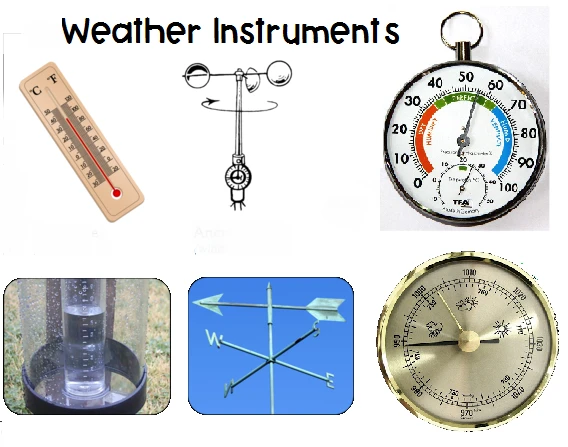
# Weather Gauges and Instruments for Accurate Meteorological Measurements
## Introduction to Weather Gauges and Instruments
Weather gauges and instruments are essential tools for meteorologists, researchers, and weather enthusiasts alike. These devices provide accurate measurements of various atmospheric conditions, enabling us to understand and predict weather patterns effectively. From simple thermometers to sophisticated weather stations, these instruments play a crucial role in our daily lives and scientific research.
## Common Types of Weather Instruments
### 1. Thermometers
Thermometers measure air temperature, one of the most fundamental weather parameters. Modern digital thermometers provide precise readings, while traditional mercury or alcohol thermometers remain reliable options.
### 2. Barometers
Barometers measure atmospheric pressure, which is crucial for weather forecasting. Mercury barometers and aneroid barometers are the two main types, with digital versions becoming increasingly popular.
### 3. Hygrometers
These instruments measure humidity levels in the air. Psychrometers (wet-and-dry bulb thermometers) and electronic hygrometers are commonly used to determine relative humidity.
### 4. Anemometers
Anemometers measure wind speed and direction. Cup anemometers, vane anemometers, and ultrasonic anemometers are among the most widely used types in meteorological stations.
### 5. Rain Gauges
Rain gauges collect and measure precipitation. Standard rain gauges, tipping bucket rain gauges, and weighing rain gauges provide different methods for accurate rainfall measurement.
## Advanced Weather Measurement Systems
Modern technology has led to the development of comprehensive weather stations that combine multiple instruments into single units. These automated weather stations can measure:
– Temperature
– Humidity
– Atmospheric pressure
– Wind speed and direction
– Precipitation
– Solar radiation
– UV index
Many of these stations can transmit data wirelessly and connect to computer systems for real-time monitoring and analysis.
## Choosing the Right Weather Instruments
When selecting weather gauges and instruments, consider the following factors:
– Accuracy requirements
– Durability and weather resistance
– Maintenance needs
– Data recording capabilities
– Budget constraints
– Specific measurement needs
Professional meteorological stations typically require higher precision instruments than those used by amateur weather enthusiasts.
## The Importance of Proper Instrument Placement
To obtain accurate measurements, proper siting of weather instruments is crucial:
– Thermometers should be placed in shaded, well-ventilated areas
– Rain gauges should be positioned in open areas, away from obstructions
– Anemometers should be mounted at standard heights (typically 10 meters above ground)
– All instruments should be placed away from heat sources and reflective surfaces
Regular maintenance and calibration are also essential to ensure ongoing accuracy of measurements.
## Future of Weather Measurement Technology
Emerging technologies are revolutionizing weather instrumentation:
– Miniaturized sensors for more compact devices
– Improved wireless connectivity for remote monitoring
– Advanced materials for greater durability
– AI-powered data analysis for better forecasting
– Integration with IoT (Internet of Things) systems
These advancements promise even more accurate and accessible weather data in the coming years.
## Conclusion
Weather gauges and instruments form the foundation of meteorological science and practical weather monitoring. From simple backyard weather stations to sophisticated professional setups, these tools help us understand our environment and prepare for changing conditions. As technology continues to advance, we can expect even more precise and comprehensive weather measurement solutions to emerge.
Keyword: weather gauges instruments